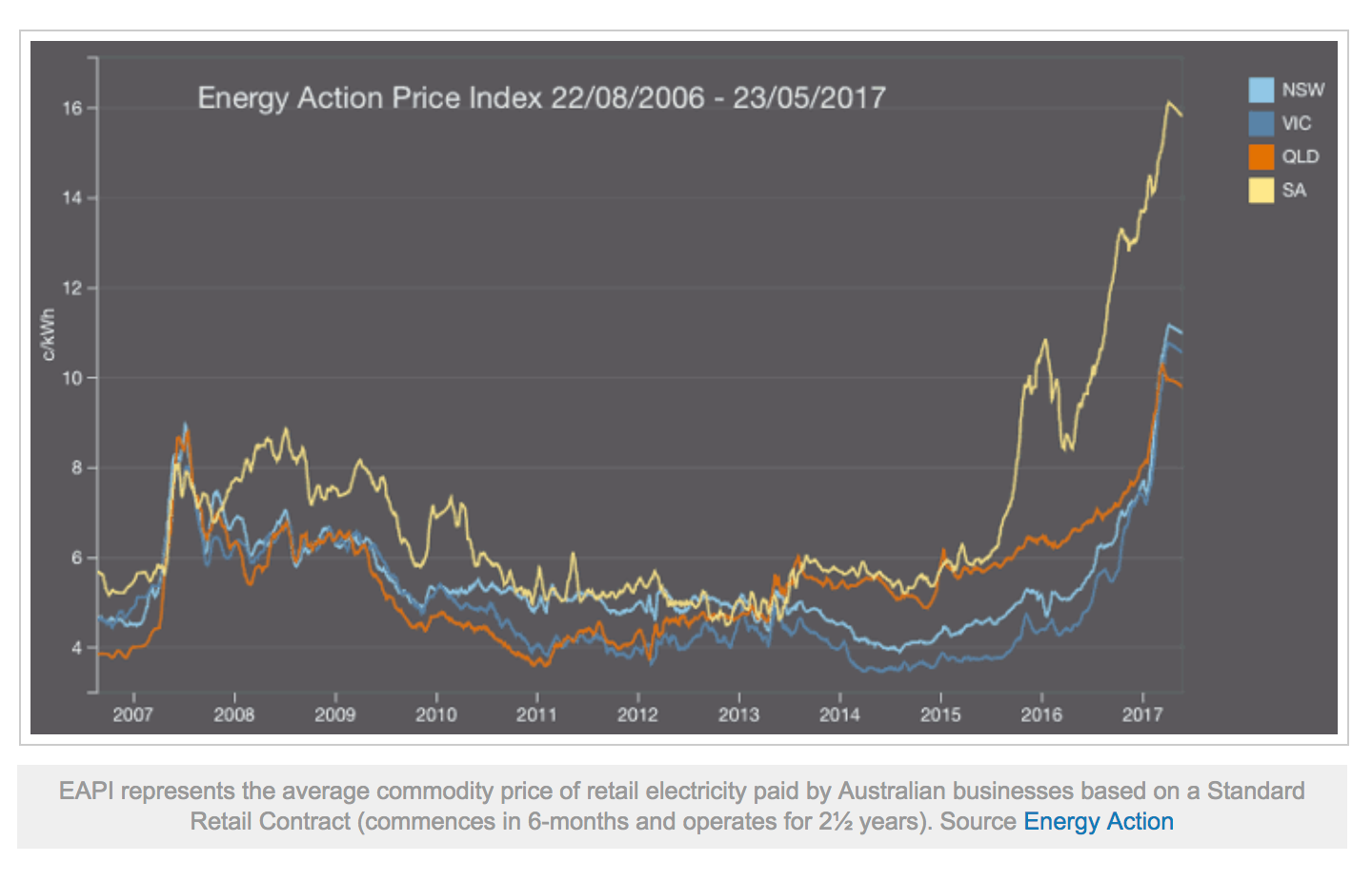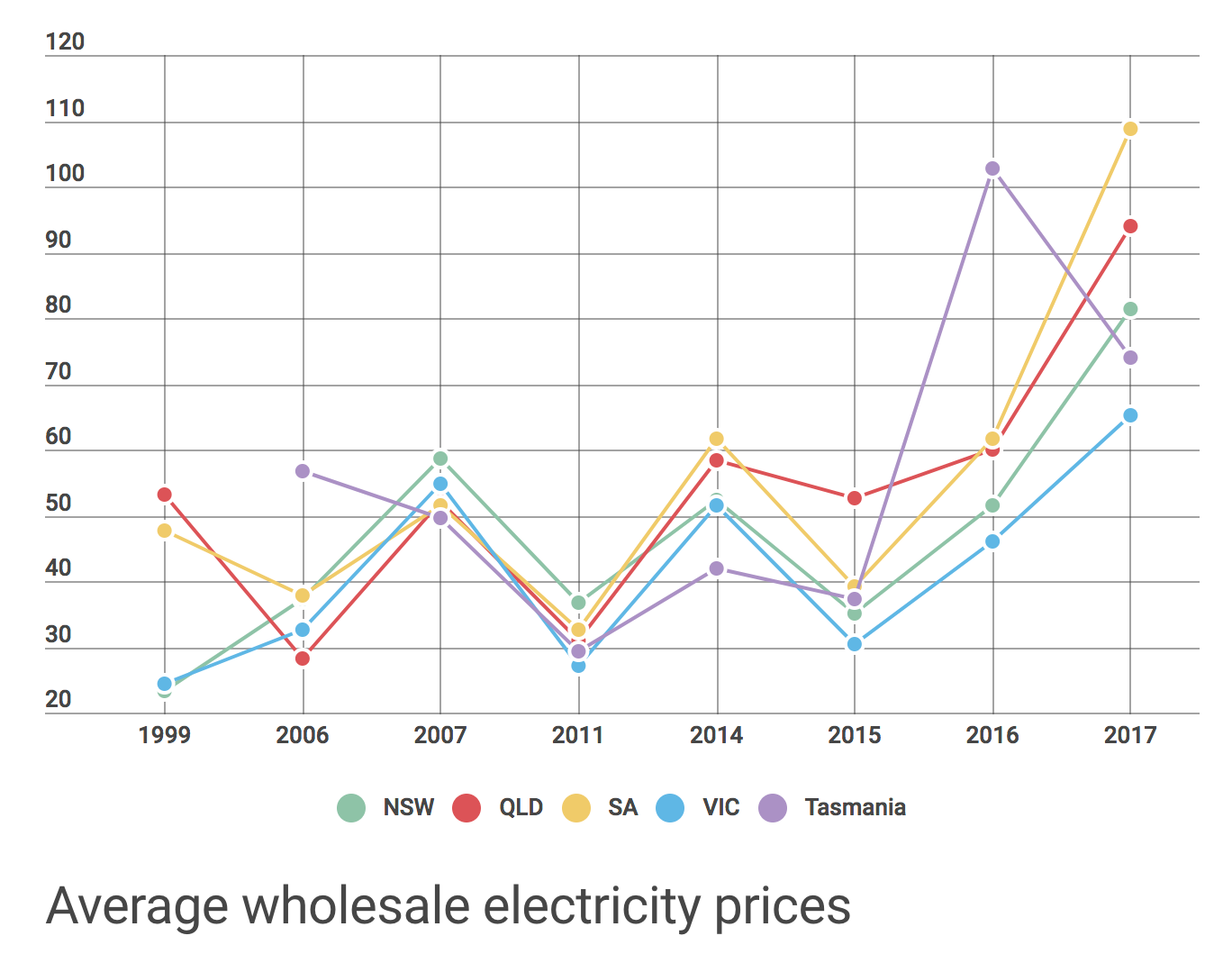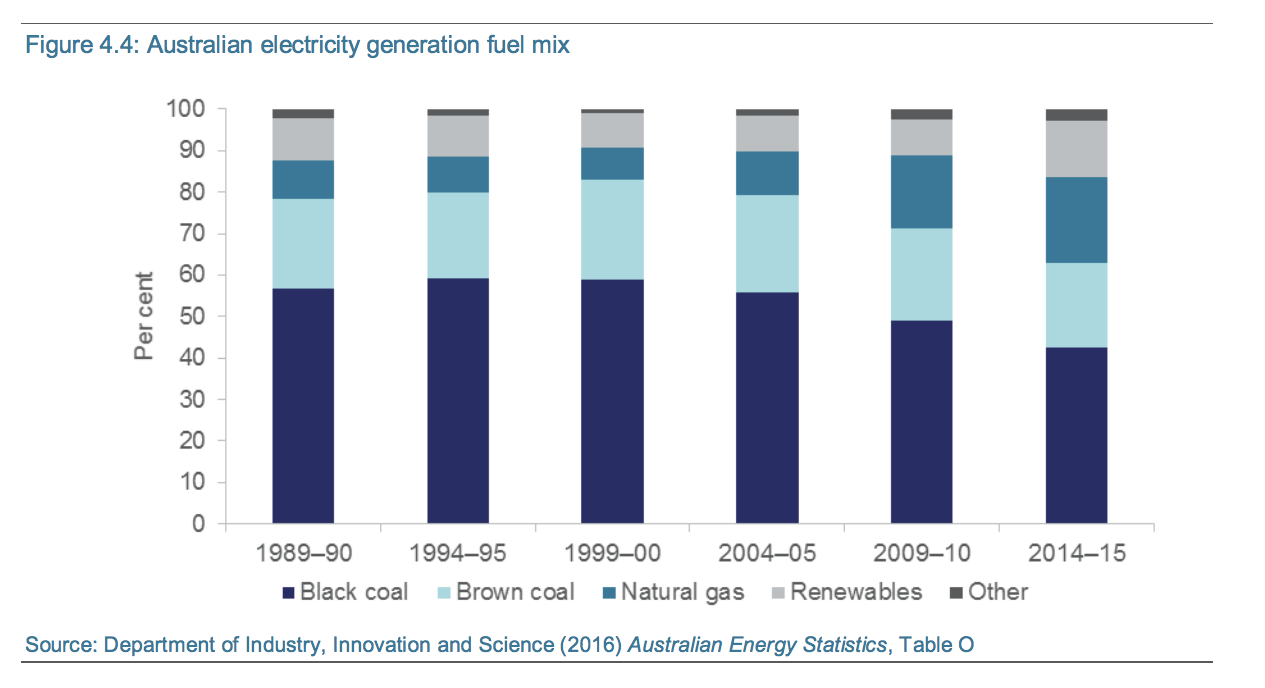-
Among the consequences of a storm which cut power in Victoria in late 2016 was Alcoa’s closure of one of two potlines at its Portland aluminium smelter.
Although the disruption lasted just a few hours, it took months to get the line up and running again. The outage was a stark reminder we need to act now to secure Australia’s energy future.
" The twin elements of cost and reliability of supply lie at the heart of the challenge."
This was a particularly graphic demonstration of the disruption which is hitting power generation in Australia – and in this case the disruption is both literal and negative. But there is disruption in a much broader sense taking place in these markets, not only in generation but in developments like power self-reliance, peer-to-peer trading and virtual networks.
As the reliability of supply has declined electricity prices have soared, with some businesses facing price hikes of around 20 per cent in early 2017.
{CF_IMAGE}
{CF_IMAGE}
The twin elements of cost and reliability of supply lie at the heart of the challenge. Alongside those is sustainability, as corporates consider their carbon footprint and how they source energy.
The challenges in getting this right are significant; larger still are the costs of getting it wrong.
In transition
Australia’s ongoing energy transition will eventually see zero-carbon renewables such as solar, wind and hydro provide the bulk of its energy requirements.
{CF_IMAGE}
{CF_IMAGE}
Meantime, gas has a vital role to play as a bridge – but the rapid rise in prices has helped undermine that. This has coincided with the shuttering of nearly 15 per cent of Australia’s aging coal-fired generation and the promise of more to come (for example, the Liddell power station in NSW).
An inconsistent approach between federal and state governments has complicated efforts to find consensus on a way forward – not least because of competing solutions and federal policy inaction.
The recent Finkel Review tackles these issues with a multi-decade blueprint focusing on four areas: increased security, future reliability, rewarding consumers, and lower emissions.
The paper foresees a reduced role for coal by 2050 and a vast increase in the use of renewables – from 28 per cent in 2020 to either 73 per cent under a Clean Energy Target policy or 70 per cent under an Emissions Intensity Scheme.
As the paper points out, wind power is now cheaper than coal, and solar is closing fast.
{CF_IMAGE}
{CF_IMAGE}
Self-reliance
Improving Australia’s energy mix means investing in new assets – and that requires a better environment for channeling capital into innovative energy solutions.
Some companies are taking matters into their own hands but the road to self-reliance is not straightforward. Benefits include reduced volatility, less operational risk, improved sustainability and potentially lower reputational risks.
There are three common solutions: embedded networks; commercial and industrial solar; and corporate power-purchasing agreements (PPAs).
Among the first group are embedded networks which use a tri-generation plant: these take in gas, and simultaneously output power, heating and cooling. Melbourne Airport installed an 8MW tri-generation facility in 2014, for example. Sydney Town Hall began running a 1.4MW tri-generation system in 2016 to manage peak demands, and will sell excess power to the grid.
Secondly, commercial or industrial solar allows a business to cut its operating expenditure and boost supply reliability, particularly when combined with storage and an energy management system.
Sydney’s International Convention Centre installed a 520kW solar array on its rooftop which will provide around five per cent of its energy requirements.
Thirdly, a number of larger energy users have explored using corporate PPAs to underwrite the supply of electricity. Corporate PPAs – in which a company either buys renewable energy from an independent generator or itself invests in energy generation – have become increasingly popular.
The trend is led by the US, where Facebook, Amazon and Alphabet were among the first entrants.
However, corporate PPAs are complex agreements and they require a far longer-term commitment, typically a decade and ideally longer, to underwrite a project. Yet they are finding traction in Australia as organisations look to ensure their infrastructure energy needs become more self-reliant.
In May 2017, for instance, Telstra signed a PPA with RES Australia to buy the output of the latter’s 70MW solar farm being built in Queensland.
Universities are going down the self-reliance path too: Monash, which recently put out an RFP for an annual 55GWh renewable project, expects all its energy needs will be met by renewables by 2030.
Corporate PPAs allow companies to access the power and green certificate without needing to own the asset. That has benefits for the balance sheet and takes advantage of the supply of competitive capital seeking exposure to renewable energy assets.
While there’s excitement about corporate PPAs it’s still very much at an early stage. Given the complexity of such arrangements, the trifecta of cost, reliability and sustainability need to be addressed on a case-by-case basis to provide sufficient motivational force in the first place.
Decentralising
These changes in organizational self-reliance fit a broader pattern in the energy sector: the decentralisation of energy assets.
Take solar PVs: a decade ago Australia had just 9MW of installed capacity; today it stands at a little over 6,200MW. Depending on the source, 1GW is enough to power 800,000 homes.
Therefore this amount is enough for 4.3 million homes (at the lower level), which is about half of Australia’s housing stock.
There is a movement towards sustainability in social infrastructure too, as we’ve seen in hospitals, schools, prisons and low-cost housing. The best time to incorporate on-site generation assets is during the initial design and construction, ensuring lower costs and future-proofs the structures.
We expect self-reliance will become increasingly sophisticated, with declining battery costs and the ability to use energy management software to trade surplus electricity from solar, creating localised trading markets.
The advent of peer to peer trading, virtual grids and demand management are all seen as innovative new technologies which will further disrupt the industry and drive change.
The journey towards self-reliance – distributed generation – is only going to accelerate.
Clearly it is a significant challenge, but it’s also a real opportunity given the renewable resources Australia’s blessed with: plenty of sun, wind, and land – all of which should ensure Australia plays a leading role in energy development now and for the foreseeable future.
Craig Shortus is Head of Utilities & Infrastructure and Tsen Wong, Director, Utilities & Infrastructure, Institutional Banking at ANZ
The views and opinions expressed in this communication are those of the author and may not necessarily state or reflect those of ANZ.
-
-
-
-
-
-
anzcomau:Bluenotes/social-and-economic-sustainability,anzcomau:Bluenotes/Environment
How to harness the energy transition
2017-11-27
/content/dam/anzcomau/bluenotes/images/articles/2017/November/ShortusWong_thumb.jpg






